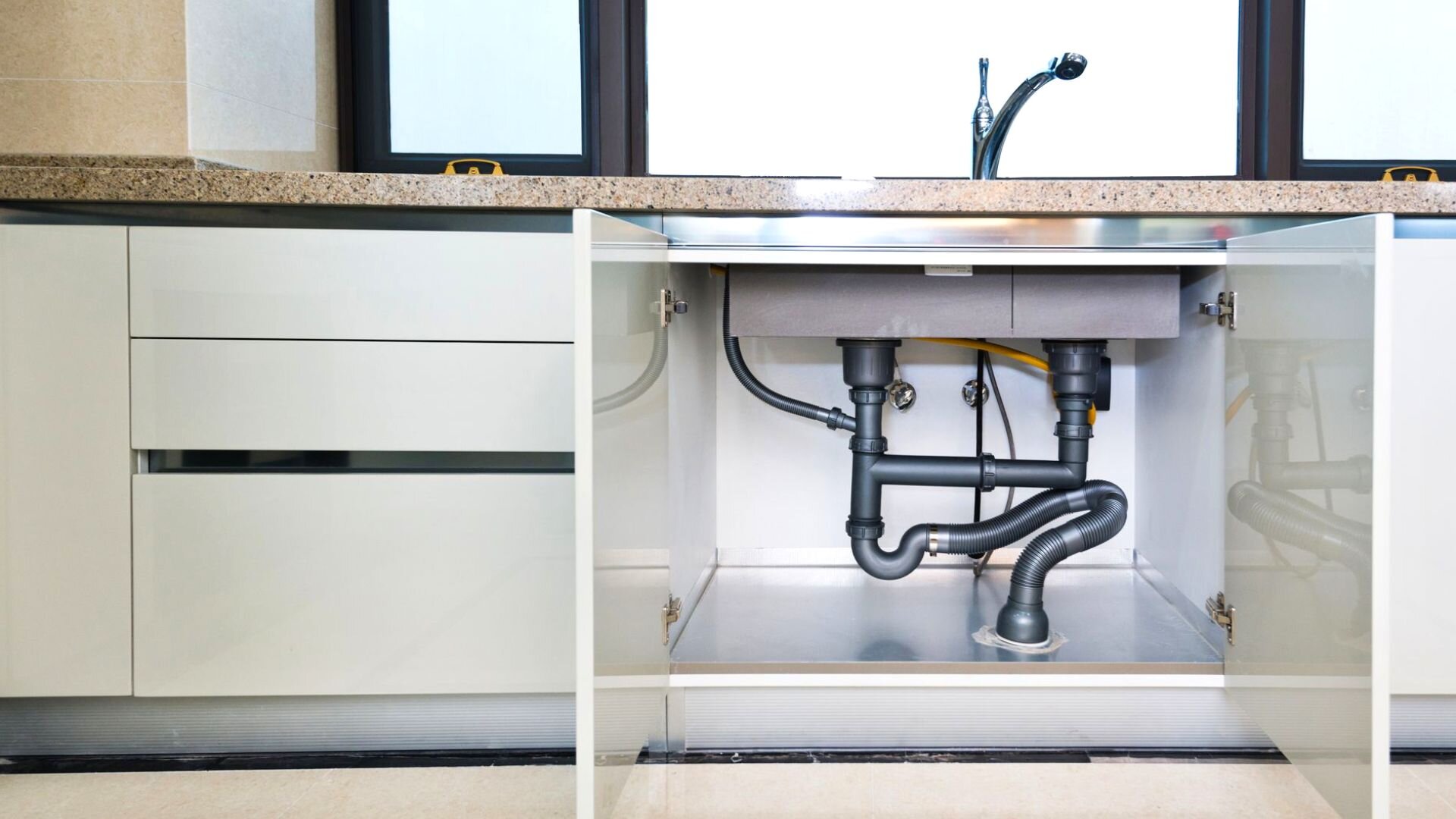

Articles
How To Connect Pipes To Old Lines
Modified: October 20, 2024
Learn how to connect new pipes to existing lines in our informative articles that provide step-by-step instructions and useful tips.
(Many of the links in this article redirect to a specific reviewed product. Your purchase of these products through affiliate links helps to generate commission for Storables.com, at no extra cost. Learn more)
Introduction
Welcome to our comprehensive guide on how to connect pipes to old lines. If you are dealing with an older plumbing system, you may find yourself facing the challenge of connecting new pipes to existing ones. Whether you are undertaking a home renovation project or fixing a plumbing issue, it is essential to know how to properly connect new pipes to old lines to ensure a leak-free and efficient plumbing system.
Old pipe systems can present unique challenges, as they may be made of different materials, have various connection methods, and may be corroded or damaged over time. However, with the right knowledge and proper techniques, you can successfully connect new pipes to old lines in a safe and effective manner.
In this article, we will guide you through the process of connecting pipes to old lines. We will discuss different types of old pipe systems and their characteristics, how to assess the condition of old lines, choosing the right connection method, and troubleshooting common issues that may arise during the process.
Before we delve into the details, it is important to note that if you are not familiar or comfortable working with plumbing systems, it is recommended to seek the assistance of a professional plumber. They have the necessary expertise and experience to handle complex plumbing tasks safely and efficiently.
Now, let’s get started and learn everything you need to know about connecting pipes to old lines!
Key Takeaways:
- Understanding the characteristics of old pipe systems, assessing their condition, and selecting the appropriate connection method are crucial steps in achieving secure and leak-free connections when connecting new pipes to old lines.
- Proper cleaning, deburring, and applying appropriate sealing materials or adhesives are essential for achieving strong and durable connections when connecting pipes to old lines. Troubleshooting common issues such as leaks, poor seals, and compatibility problems is also crucial for maintaining the integrity of the plumbing system.
Understanding Old Pipe Systems
Before you can effectively connect new pipes to old lines, it’s essential to understand the characteristics and types of old pipe systems you may encounter. Old pipe systems can vary in material, age, and condition, which can impact the connection methods you can use.
Here are some common types of old pipe systems:
PVC Pipes:
Polyvinyl chloride (PVC) pipes have gained popularity in modern plumbing systems due to their durability, affordability, and ease of installation. However, older homes may still have PVC pipes, which were commonly used in construction during the latter half of the 20th century. PVC pipes are typically white in color and have a smooth surface.
Copper Pipes:
Copper pipes have been widely used for plumbing systems for many years due to their excellent conductivity, corrosion resistance, and durability. Copper pipes can be identified by their reddish-brown color and can often be found in older homes. They are known for their longevity and can last for several decades.
Galvanized Pipes:
Galvanized pipes were commonly used in plumbing systems from the late 1800s to the mid-1900s. These pipes are made of steel and coated with a layer of zinc to prevent corrosion. Over time, galvanized pipes can rust and develop leaks, making them a common issue in older homes. They have a dull gray appearance and may show signs of corrosion.
Read more: What Type Of Pipe For Outdoor Water Line
PEX Pipes:
PEX (cross-linked polyethylene) pipes are a newer type of plumbing material that has gained popularity in recent years. They are flexible and easy to work with, making them ideal for retrofitting older homes. PEX pipes are typically color-coded, with red used for hot water lines and blue for cold water lines.
Understanding the type of old pipe system you are dealing with will help you determine the appropriate connection method and the tools you will need. It’s also important to assess the condition of the old lines to ensure they are suitable for connection. In the next section, we will discuss how to assess the condition of old lines.
Assessing the Condition of Old Lines
Before connecting new pipes to old lines, it’s crucial to assess the condition of the existing plumbing system. This step is essential to ensure that the old lines are suitable for connection and to identify any potential issues that may need to be addressed.
Here are some steps to help you assess the condition of old lines:
Visual Inspection:
Begin by visually inspecting the old lines for any visible signs of damage, such as corrosion, rust, leaks, or sagging. Look for discoloration, stains, or water spots on walls, ceilings, or floors that may indicate a problem with the plumbing system. Pay attention to joints and connections, as these areas are more prone to leaks.
Water Pressure Test:
Perform a water pressure test to check the overall condition of the old lines. Close all faucets, valves, and other water outlets in the house. Then, attach a pressure gauge to a faucet or hose bib and turn on the water supply. Monitor the pressure gauge to ensure it remains steady. A significant drop in pressure may indicate a leak or blockage within the pipes.
Read more: How To Connect Coffee Machine To Water Line
Drainage Test:
Test the drainage system by running water through various drains in the house. Observe the drainage speed and listen for any gurgling sounds or slow draining, which may indicate a clog or a ventilation issue. If you notice any drainage problems, it’s essential to address them before connecting new pipes.
Professional Inspection:
If you have concerns about the condition of the old lines or are unsure about performing an assessment yourself, it’s advisable to hire a professional plumber. They can perform a thorough inspection using specialized equipment and provide an accurate assessment of the plumbing system’s condition.
Assessing the condition of old lines is crucial to ensure that they are suitable for connection and to identify any underlying issues that may require repairs or replacements. By conducting a thorough assessment, you can proceed with confidence in choosing the appropriate connection method for your specific plumbing needs. In the next section, we will explore different connection methods for connecting new pipes to old lines.
Choosing the Right Connection Method
When it comes to connecting new pipes to old lines, there are several connection methods to choose from. The selection of the right connection method depends on various factors, including the type of old pipe system, the condition of the existing lines, and the materials you are working with for the new pipes.
Compression Fittings:
Compression fittings are commonly used for connecting copper pipes to old lines. These fittings consist of a compression nut and a ferrule, which are tightened onto the pipe to create a secure and watertight connection. Compression fittings are easy to install and can be used for both water supply and drainage systems.
Soldering:
Soldering is a traditional method used for connecting copper pipes. It involves heating the joint area and applying solder to create a strong and permanent bond. Soldering requires skill and practice, but it can provide a reliable and durable connection. Be sure to thoroughly clean the surfaces and use flux to ensure a proper soldered joint.
PVC/CPVC Cement:
For connecting PVC or CPVC pipes to old lines, PVC/CPVC cement is typically used. This adhesive creates a chemical bond between the pipes and fittings, ensuring a strong and leak-free connection. It’s important to follow the manufacturer’s instructions and allow sufficient curing time for the cement to set properly.
Push-Fit Connectors:
Push-fit connectors, also known as push-to-connect or quick-connect fittings, are popular for connecting PEX pipes to old lines. These fittings feature a mechanism that allows the pipes to be inserted and securely locked into place without the need for any tools or soldering. Push-fit connectors offer convenience and ease of installation.
Threaded Connections:
Threaded connections are commonly used for connecting galvanized pipes. They involve screwing the pipes together using threaded fittings such as unions, couplings, or elbows. Teflon tape or pipe thread sealant is applied to create a watertight seal. Threaded connections are durable and can be disassembled if needed.
When choosing the right connection method, consider factors such as the skill level required, the availability of tools and materials, and the specific requirements of your plumbing system. If you are unsure about the most appropriate connection method, consult with a professional plumber who can provide guidance based on their expertise and experience.
Now that we have explored various connection methods, the next step is to learn how to properly clean and prepare the pipes before making the connections. We will discuss this in the next section.
Read more: How To Line Chimney
Cleaning and Preparing the Pipes
Before making the connections between new pipes and old lines, it’s essential to clean and prepare the pipes to ensure a secure and leak-free connection. This step is crucial for removing dirt, debris, and any existing contaminants that could hinder the effectiveness of the connection.
Here are the steps to clean and prepare the pipes properly:
1. Turn off the Water Supply:
Before starting any work, turn off the water supply to the area where you will be making the connections. This will prevent any water flow and ensure a dry working environment.
2. Remove any Existing Fittings:
If there are any existing fittings or connectors on the old lines that need to be replaced or reconnected, remove them carefully. Use the appropriate tools, such as a pipe wrench or adjustable pliers, to loosen and remove the fittings.
3. Clean the Pipes:
Thoroughly clean the pipes to remove any dirt, grime, or residue on the connection surfaces. Use a pipe cleaning brush, sandpaper, or a wire brush to scrub the pipe ends and ensure a clean and smooth surface. This step is especially important when working with copper or galvanized pipes to remove any corrosion or oxidation that may hinder the connection.
4. Use Solvent or Primer:
If you are working with PVC or CPVC pipes, apply a suitable solvent or primer to the pipe ends and fittings. This helps soften the plastic and prepares the surfaces for the adhesive bonding process. Follow the manufacturer’s instructions for the correct application technique and drying time.
5. Apply Teflon Tape or Pipe Thread Sealant:
When working with threaded connections, it’s essential to apply Teflon tape or pipe thread sealant to create a watertight seal. Wrap the tape clockwise around the male threads or apply the sealant according to the product instructions. This helps prevent leaks and ensures a secure connection.
6. Check for Smooth and Even Surfaces:
Before making the connections, check that the pipe ends have smooth and even surfaces. If any rough edges or burrs are present, use a file or sandpaper to smooth them out. This will ensure a proper fit and minimize the risk of leaks.
By following these steps, you can ensure that the pipes are clean, properly prepared, and ready for the connection process. Taking the time to clean and prepare the pipes will contribute to a successful and long-lasting connection between the new pipes and old lines.
Next, we will discuss specific techniques for connecting different types of new pipes to old lines. Whether you are working with PVC, copper, PEX, or galvanized pipes, we’ve got you covered with detailed instructions in the upcoming sections.
Connecting PVC Pipes to Old Lines
When it comes to connecting PVC pipes to old lines, there are a few methods you can use, depending on the specific application and the condition of the existing plumbing system. Here, we will discuss the two common techniques: using compression fittings and using PVC cement.
Read more: How To Insulate Plumbing Pipes
Using Compression Fittings:
Compression fittings are a versatile option for connecting PVC pipes to old lines. Here’s how to do it:
- Measure and cut the PVC pipe to the desired length, ensuring a clean and square cut.
- Deburr the cut edges of the PVC using a utility knife or sandpaper to remove any rough edges or burrs.
- Slide a compression nut onto the PVC pipe, followed by a compression ring (also known as a ferrule).
- Insert the PVC pipe into the old line until it reaches the desired depth.
- Tighten the compression nut by hand initially, then use adjustable pliers or a wrench to ensure a secure connection. Be careful not to overtighten, as it may cause damage to the fitting.
- Turn on the water supply and check for any leaks. If necessary, tighten the compression nut slightly to stop any leakage.
Using PVC Cement:
If the old lines and PVC pipes are in good condition and you want a permanent and watertight connection, PVC cement is the preferred method. Here’s how to use PVC cement:
- Measure and cut the PVC pipe to the desired length, ensuring a clean and square cut.
- Use a PVC pipe cleaner or primer to clean the end of the PVC pipe and the inside of the old line fitting. This helps remove any dirt, grease, or debris and prepares the surfaces for better adhesion.
- Apply PVC cement to the cleaned areas by using a brush or an applicator provided with the cement. Apply an even and liberal coat to both the pipe end and the fitting.
- Quickly insert the PVC pipe into the old line fitting, ensuring it goes in fully to the desired depth and makes a tight connection.
- Hold the pipe and fitting together firmly for a few seconds to allow the cement to set. The curing time can vary depending on the specific PVC cement being used, so refer to the manufacturer’s instructions.
- Allow sufficient time for the cement to fully cure before turning on the water supply. This ensures a strong and durable connection.
Note: It’s important to choose the appropriate PVC fittings, such as couplings, elbows, or tees, that are compatible with both the old lines and the new PVC pipes. Ensure that the PVC pipes and fittings are the same size to achieve a proper fit.
By using compression fittings or PVC cement, you can successfully connect PVC pipes to old lines. Remember to follow the manufacturer’s instructions and allow sufficient time for the connections to cure before testing for leaks.
Next, we will explore the process of connecting copper pipes to old lines.
Connecting Copper Pipes to Old Lines
Connecting copper pipes to old lines requires specific techniques to ensure a secure and leak-free connection. Here, we will discuss two common methods: soldering and compression fittings.
Soldering:
Soldering is a traditional and reliable method for connecting copper pipes. Follow these steps to solder copper pipes to old lines:
- Cut the copper pipe to the desired length using a copper pipe cutter. Ensure that the cut is clean and free from any burrs or rough edges.
- Use emery cloth or a wire brush to clean the outer surface of the copper pipe and the inner surface of the old line fitting. This step helps remove any dirt, corrosion, or oxidation and promotes better adhesion.
- Apply flux to the cleaned surfaces of the pipe and fitting. Flux helps to prevent oxidation during the soldering process and allows the solder to flow smoothly.
- Insert the copper pipe into the old line fitting until it reaches the desired depth.
- Heat the joint area using a propane torch or a soldering torch until it is hot enough to melt the solder. Move the flame evenly around the joint to distribute the heat.
- Once the joint is heated, touch the solder wire to the joint and allow it to melt and flow around the connection. Ensure that the solder fully surrounds the joint for a secure bond.
- Remove the flame and let the joint cool for a few seconds until the solder solidifies. Avoid disturbing the joint while it is cooling to maintain the integrity of the connection.
- Wipe away any excess solder using a clean cloth or rag.
Compression Fittings:
If soldering is not feasible or desired, compression fittings can be used to connect copper pipes to old lines. Follow these steps to use compression fittings:
- Measure and cut the copper pipe to the desired length using a copper pipe cutter. Ensure a clean and square cut free from any burrs.
- Deburr the cut edges of the copper pipe using an emery cloth or a deburring tool to remove any sharp edges or imperfections.
- Slide a compression nut onto the copper pipe, followed by a compression ring (also known as a ferrule).
- Insert the copper pipe into the old line fitting until it reaches the desired depth.
- Tighten the compression nut by hand initially and then use adjustable pliers or a wrench to ensure a secure connection. Avoid over-tightening, as it may damage the fitting or cause leaks.
- Turn on the water supply and check for any leaks at the connection point. If necessary, tighten the compression nut slightly to stop any leakage.
When using either method, it’s important to select the appropriate copper fittings, such as elbows, tees, or connectors, that match the size and type of the old lines and the new copper pipes.
By utilizing soldering or compression fittings, you can successfully connect copper pipes to old lines. Remember to follow safety precautions, such as wearing protective gloves and eye protection when working with soldering torches or sharp tools.
Next, we will explore the process of connecting PEX pipes to old lines.
Connecting PEX Pipes to Old Lines
Connecting PEX pipes to old lines is a popular and straightforward method due to the flexibility and ease of use of PEX piping. There are a few different techniques you can use, such as using push-fit connectors or crimping rings. Let’s explore these methods:
Push-Fit Connectors:
Push-fit connectors, also known as push-to-connect or quick-connect fittings, are a convenient option for connecting PEX pipes to old lines. Here’s how to use push-fit connectors:
- Measure and cut the PEX pipe to the desired length using a PEX pipe cutter or a fine-toothed saw, ensuring a clean and square cut.
- Insert the PEX pipe into the push-fit connector until it reaches the internal stop. Make sure the pipe seats securely within the connector and that it forms a tight seal.
- Give the pipe a slight tug to ensure it is firmly in place and won’t easily disconnect.
- Repeat the process for the other end of the PEX pipe, connecting it to the appropriate old line fitting.
- Turn on the water supply and check for any leaks at the connection points. Push-fit connectors should provide a secure and watertight connection without the need for additional tools or sealing materials.
Crimping Rings:
Another method for connecting PEX pipes to old lines is by using crimping rings. Here’s how to use crimping rings:
- Measure and cut the PEX pipe to the desired length using a PEX pipe cutter or a fine-toothed saw, ensuring a clean and square cut.
- Slide a crimp ring onto the PEX pipe, ensuring it is placed close to the end of the pipe.
- Insert a brass or plastic PEX fitting into the end of the PEX pipe. Ensure that the fitting is fully inserted into the pipe until it reaches the shoulder.
- Using a crimping tool designed for PEX connections, position the tool jaws over the crimp ring and compress the ring firmly. This will create a secure connection between the PEX pipe and the fitting.
- Repeat the process for the other end of the PEX pipe, connecting it to the appropriate old line fitting.
- Turn on the water supply and check for any leaks at the connection points. Crimping rings should provide a reliable and watertight connection when properly installed.
Both push-fit connectors and crimping rings offer secure and reliable connections for PEX pipes to old lines. Ensure that you are using the appropriate fittings designed for PEX connections and follow the manufacturer’s instructions for the specific brand of push-fit connectors or crimping rings.
Before proceeding, it’s important to note that PEX piping systems require specific tools and materials, such as a PEX pipe cutter, crimping tool, or expansion tool, depending on the connection method you choose. Ensure that you have the correct tools and follow all safety guidelines for working with PEX pipes.
In the next section, we will discuss connecting galvanized pipes to old lines.
Read more: How To Paint A Pipe Fence
Connecting Galvanized Pipes to Old Lines
Connecting galvanized pipes to old lines requires careful consideration due to the potential issues associated with aging galvanized plumbing systems. Here are two common methods you can use: threaded connections and dielectric unions.
Threaded Connections:
Threaded connections are commonly used for connecting galvanized pipes to old lines. Here’s how to create a threaded connection:
- Measure and cut the galvanized pipe to the desired length using a pipe cutter or a reciprocating saw.
- Using a pipe threader or die, thread the ends of the galvanized pipe. This will create the male threads necessary for connection.
- Apply Teflon tape or pipe thread sealant to the male threads of the pipe. Wrap the tape clockwise around the threads or apply the sealant according to the product instructions.
- Screw the threaded end of the galvanized pipe into the corresponding threaded fitting or connection point on the old lines.
- Use a pipe wrench or adjustable pliers to tighten the connection snugly. Be cautious not to over-tighten, as it can damage the threads or cause leaks.
- Turn on the water supply and check for any leaks at the connection points. If necessary, apply additional Teflon tape or reapply pipe thread sealant to stop any leakage.
Dielectric Unions:
Connecting galvanized pipes to other types of pipes, such as copper or PEX, may require the use of dielectric unions. These unions help prevent galvanic corrosion by isolating dissimilar metals. Here’s how to use dielectric unions:
- Cut both the galvanized pipe and the other pipe (e.g., copper or PEX) to the desired lengths using suitable pipe cutters.
- Insert one end of the galvanized pipe into one side of the dielectric union and tighten the union’s nut securely.
- Insert the other pipe into the opposite side of the dielectric union and tighten the nut securely.
- Ensure that both connections provide a snug fit and that the dielectric union is properly secured.
- Turn on the water supply and check for any leaks at the connection points. If necessary, tighten the unions slightly or apply appropriate sealing materials to stop any leakage.
When working with galvanized pipes, it’s essential to be aware of their potential issues, such as rust, corrosion, and mineral buildup. If you encounter significant corrosion or damage to the galvanized pipes, it may be necessary to consider replacing them with more modern plumbing materials.
As with any plumbing project, it’s recommended to consult with a professional plumber if you have any concerns or questions about connecting galvanized pipes to old lines. They can provide guidance based on their expertise and experience.
In the next section, we will discuss common issues that may arise during the process of connecting pipes to old lines and troubleshooting methods to address them.
Troubleshooting Common Issues
When connecting pipes to old lines, it’s not uncommon to encounter some challenges or issues along the way. Fortunately, many of these issues can be resolved with a little troubleshooting. Here are some common issues that may arise during the process and how to address them:
Read more: How To Replace Plumbing Pipes
Leakage:
One of the most common issues is leakage at the connection points. If you notice any leaks, remove the connections and check for any damaged or misaligned components. Ensure that the pipes are clean and properly inserted into the fittings. Apply the appropriate sealing materials, such as Teflon tape or pipe thread sealant, and reassemble the connections. Tighten the fittings securely, but be cautious not to overtighten, as it can cause damages or create new leak points.
Poor Seal or Fit:
If you are experiencing a poor seal or fit between the new pipes and old lines, check for any burrs, debris, or irregularities on the pipe ends or inside the fittings. Clean the surfaces thoroughly and ensure a clean and snug fit. For threaded connections, reapply Teflon tape or pipe thread sealant to improve the seal. If necessary, consider using different types of fittings or connection methods that provide a better fit for your specific plumbing system.
Incompatible Materials:
It’s important to ensure that the materials of the new pipes and old lines are compatible. Some materials can corrode or react with each other, leading to issues like leaks or blockages. For example, avoid connecting copper pipes directly to galvanized pipes without a dielectric union, as it can cause galvanic corrosion. If you encounter such compatibility issues, consider using appropriate transition fittings or consult with a professional plumber for guidance.
Low Water Pressure or Flow:
If you notice low water pressure or flow after connecting new pipes to old lines, there may be a restriction or blockage. Check for any clogs or debris in the pipes and fittings, and clear them if necessary. Pay attention to any valves or pressure regulators that may need adjusting. Additionally, ensure that the pipe diameter and fittings used are appropriate for the desired water flow and pressure. If the issue persists, it’s advisable to consult a plumber to assess the situation and recommend appropriate solutions.
Read more: How To Weld Pipe Fence
Unusual Noises:
If you hear any unusual noises, such as gurgling or banging, it could indicate a ventilation or air pressure issue within the plumbing system. Check for any obstructions or blockages in the vents and remove them. Make sure that the vents are properly installed and free from damage. If the noises persist, it may require professional inspection and adjustment of the plumbing system to resolve the issue.
When troubleshooting these common issues, it’s often beneficial to have the appropriate tools, plumbing materials, and knowledge of the specific connection methods. If you are uncertain or encounter complex issues, it’s recommended to consult with a professional plumber who can provide expert advice and assistance.
Now that we have explored common troubleshooting methods, let’s wrap up our comprehensive guide.
Conclusion
Connecting pipes to old lines requires careful consideration, proper techniques, and knowledge of the specific plumbing system. Throughout this comprehensive guide, we have explored various methods for connecting different types of pipes to old lines, including PVC, copper, PEX, and galvanized pipes.
Understanding the characteristics of old pipe systems, assessing their condition, and selecting the appropriate connection method are crucial steps in achieving secure and leak-free connections. Whether you choose compression fittings, soldering, push-fit connectors, threaded connections, or dielectric unions, each method has its advantages and considerations.
Additionally, we discussed the importance of cleaning and preparing the pipes before making connections to ensure optimal results. Proper cleaning, deburring, and applying appropriate sealing materials or adhesives are essential for achieving strong and durable connections.
Throughout the process, it’s important to troubleshoot common issues that may arise, such as leaks, poor seals, and compatibility problems. By following the troubleshooting techniques outlined, you can address these issues and ensure the integrity of your plumbing system.
Remember, while this guide provides a comprehensive overview and guidance, it’s always advisable to consult with a professional plumber if you have any concerns, lack experience, or encounter complex plumbing systems. They can provide expert advice and assistance tailored to your specific situation.
With the right knowledge, techniques, and the appropriate tools, you can successfully connect new pipes to old lines, creating a reliable and efficient plumbing system in your home or building.
Now you are equipped with the skills needed to tackle pipe connections to old lines. So go ahead and confidently take on your plumbing projects, ensuring leak-free connections and a properly functioning plumbing system. Good luck!
Frequently Asked Questions about How To Connect Pipes To Old Lines
Was this page helpful?
At Storables.com, we guarantee accurate and reliable information. Our content, validated by Expert Board Contributors, is crafted following stringent Editorial Policies. We're committed to providing you with well-researched, expert-backed insights for all your informational needs.
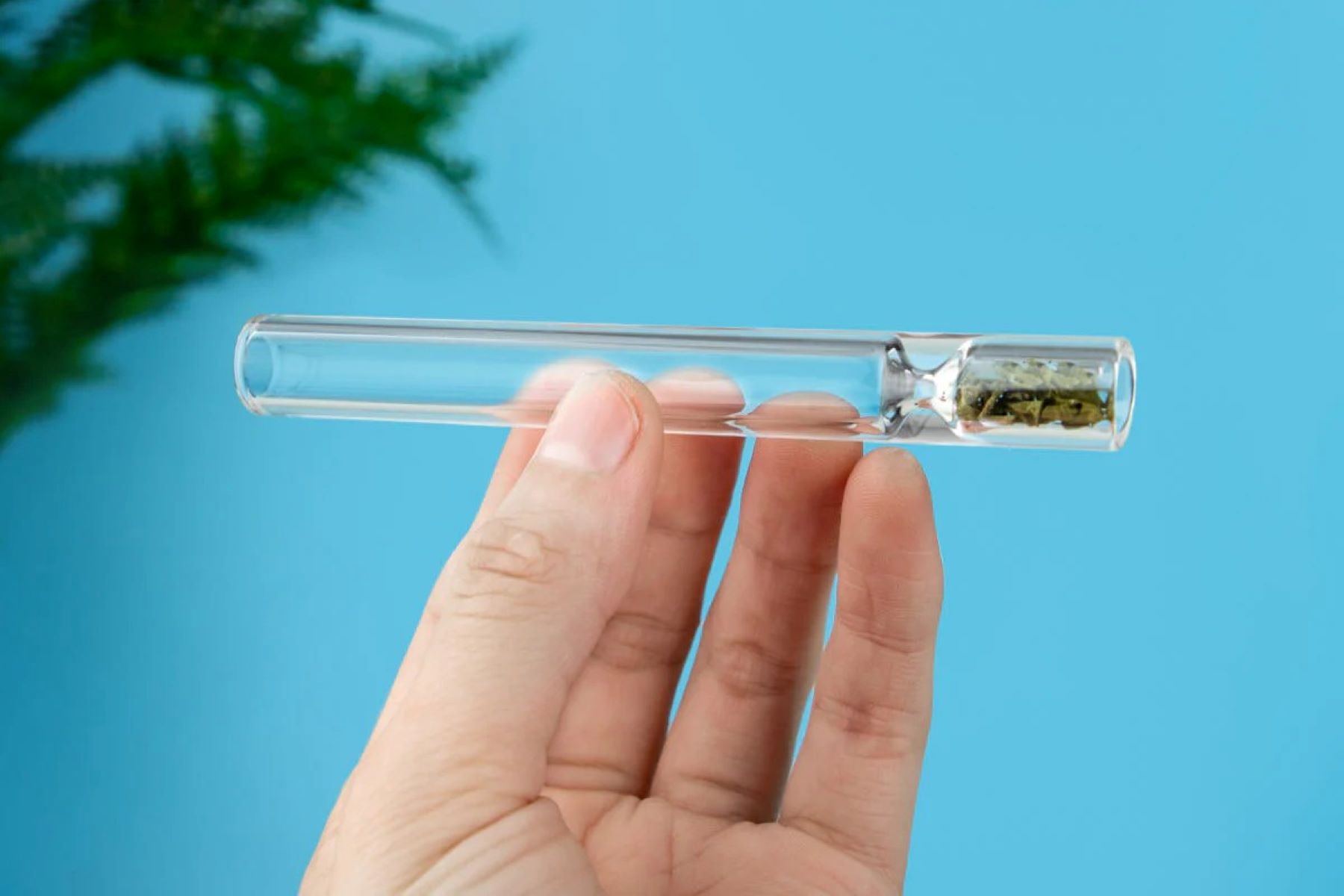
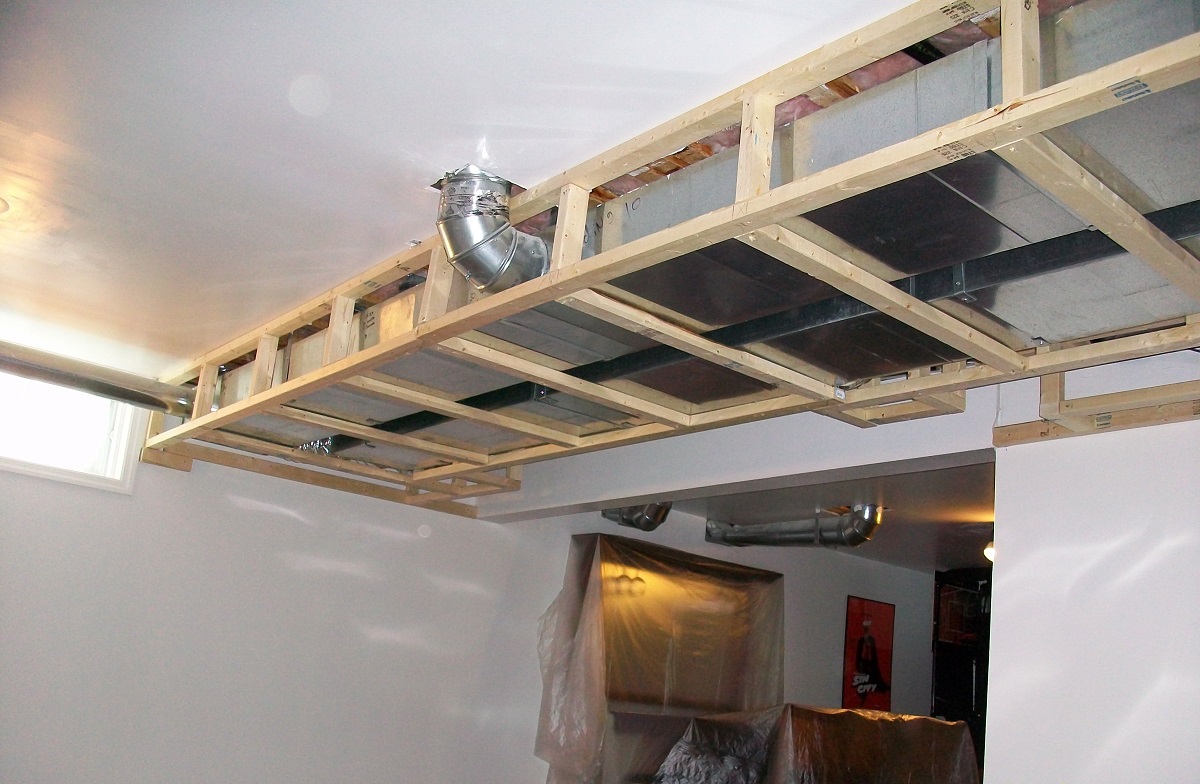
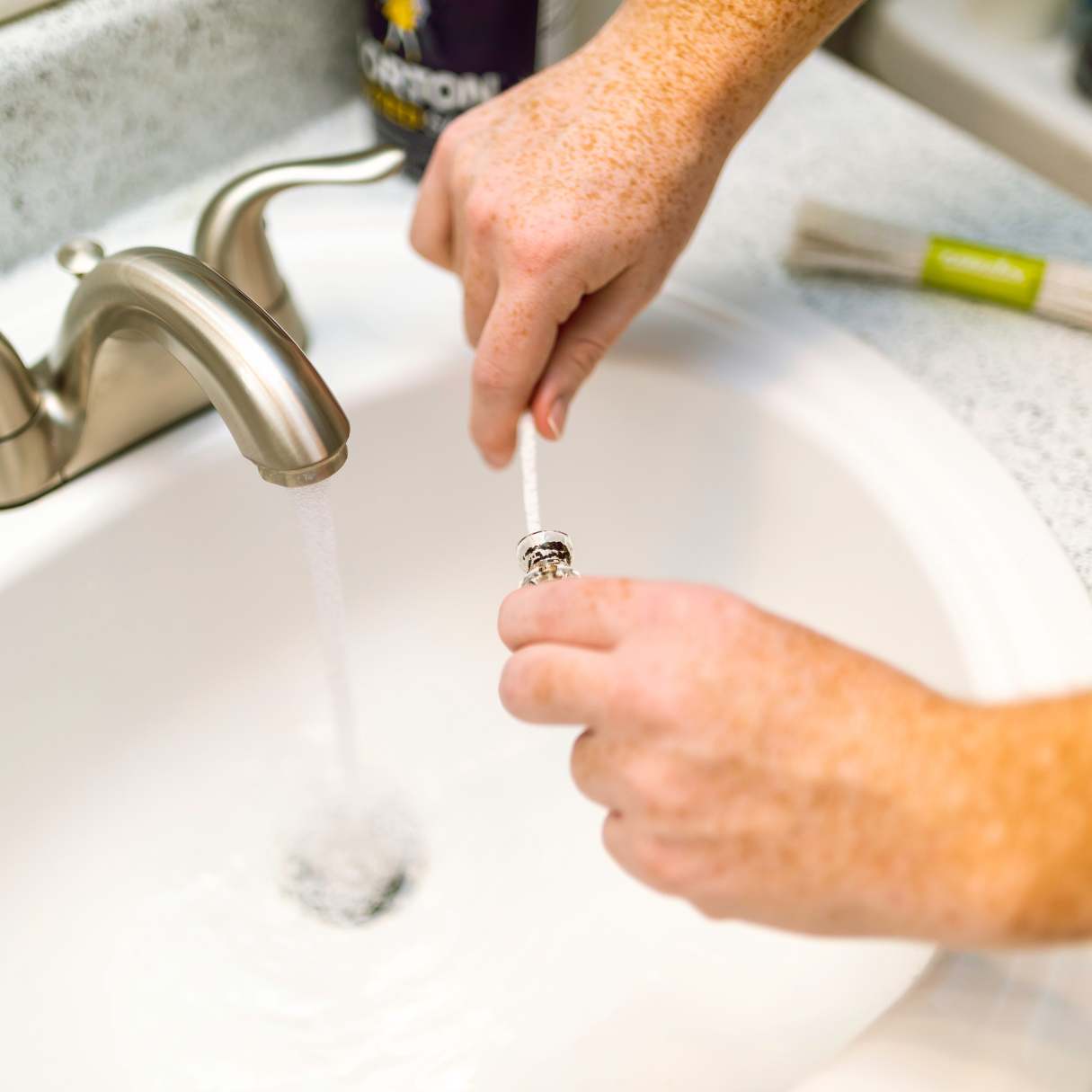
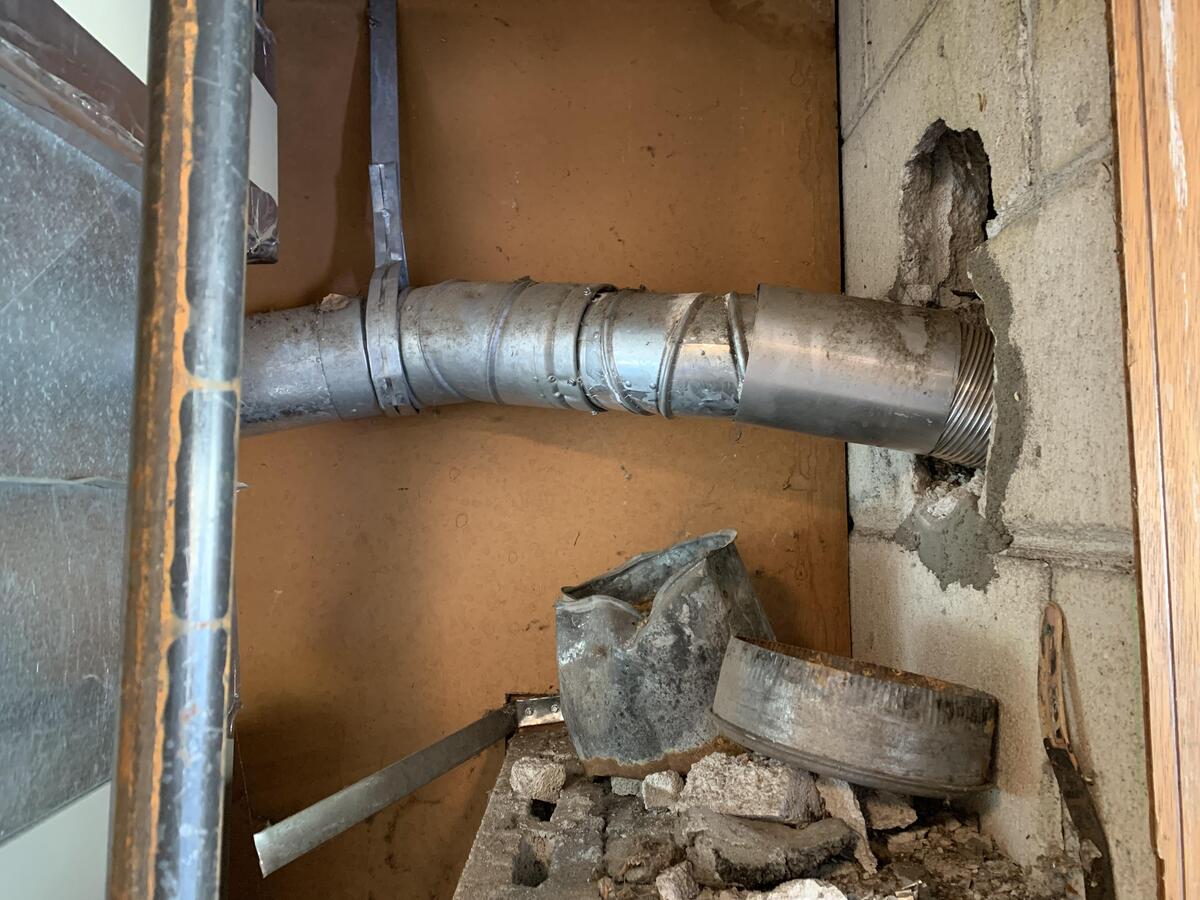
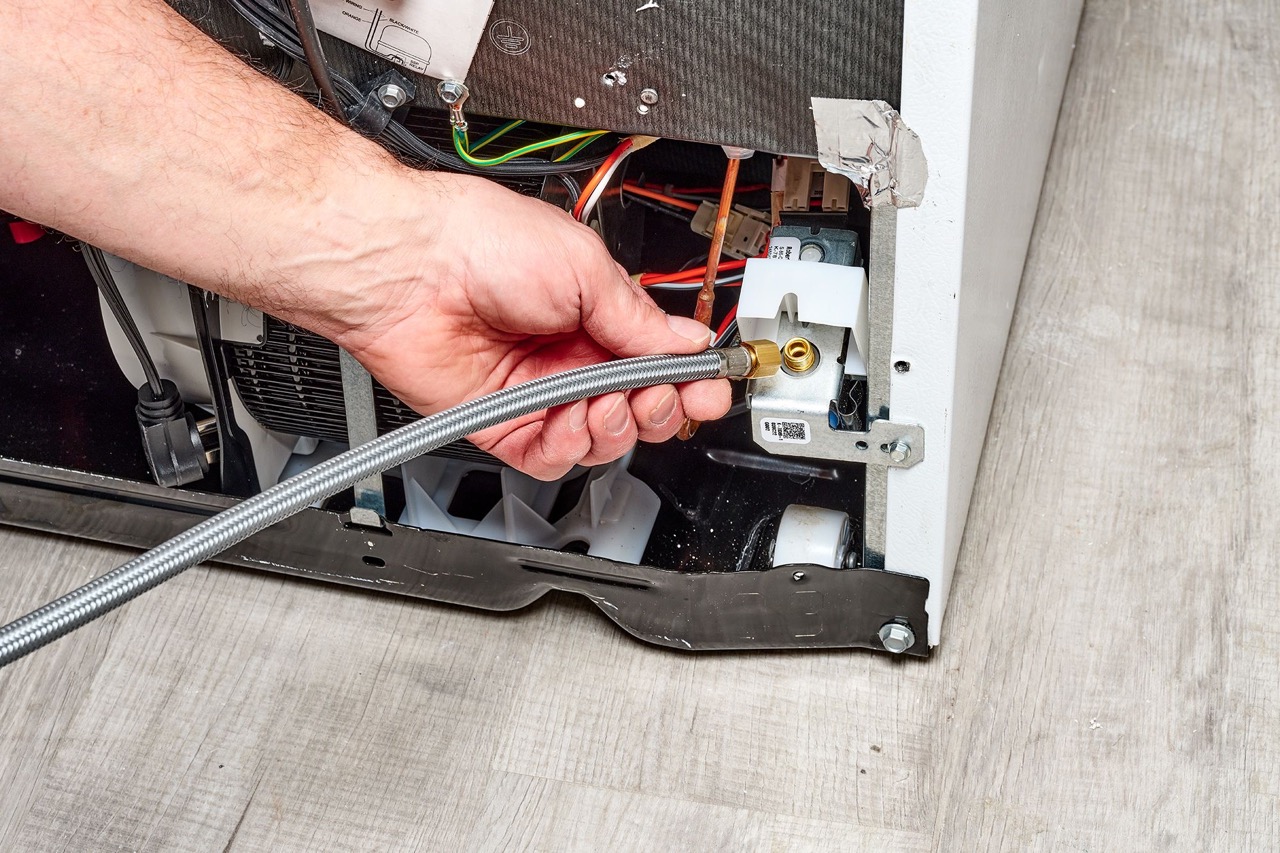

0 thoughts on “How To Connect Pipes To Old Lines”